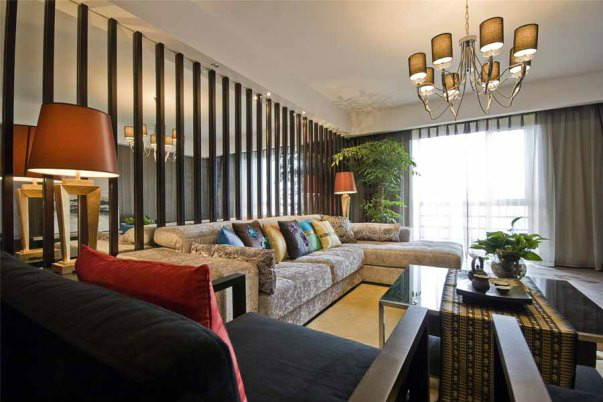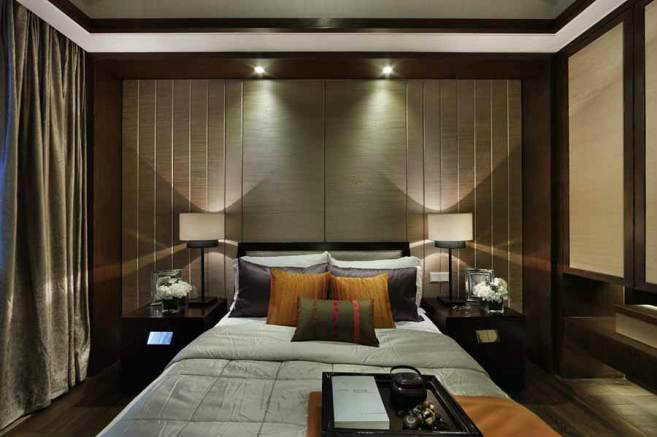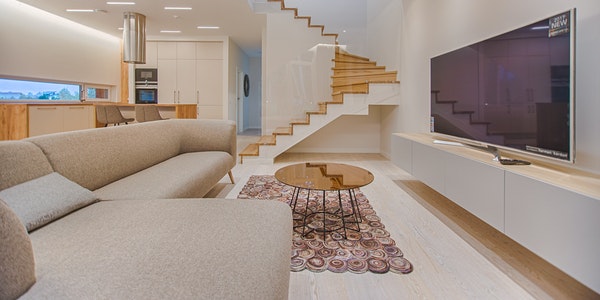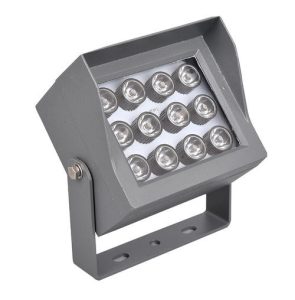Just as the sun has light waves radiating, there are also light waves in lights. Due to the difference in the wattage of the light, the length of the wave is also different. If you do not pay attention to the placement of lighting in the house, it will disturb the balance of the aura in the house, which is detrimental to the physical and mental health of the homeowner. This is the reason why the “light evil” in daily life is not good for people. Therefore, it is very important to pay attention to the placement of lighting in the residence.
Considering the integrity of the residential environment, the natural light environment and the artificial light environment need to be reasonably matched. In the design of the lighting design, the homeowner should pay attention to the following points.
1. Downlight
Generally, downlights are embedded in the ceiling planes with suspended ceilings, such as the hallway, kitchen, bathroom, living room, bedroom, balcony, etc., as needed. Then according to the illuminance-into two incandescent bulbs or energy-saving lamps. The wattage of the incandescent bulb can be between 15~60W, and the wattage of the LED tube can be between 9~12W.
If you use downlights in the kitchen, the bulb wattage should be relatively large. Because the kitchen operation requires high lighting. However, it is not suitable to use “downlight” lighting in the kitchen, because its directivity is too strong, the diffusion effect is poor, and the effect is not as good as the ceiling lamp.
2. Ceiling light
Ceiling lights are widely used in the kitchen, bathroom, and bedroom areas. The ceiling lamp occupies a small space and has a large diffusion range. It is a kind of direct lighting, which is relatively energy-saving and has many benefits.
3. Spotlight (spotlight)
Spotlights are used to highlight artistic effects, such as murals on the walls, artworks in the pavilion, and so on. After the intensity of light increases, the visual impact will also increase, and the charm of the artwork will also be highlighted. The spotlights generally used in houses are now mostly LED lights, which have low heat generation and long life span, and are suitable for long-term activation. Of course, we recommend turning the lights on or off as needed.
Generally, the illuminance of LED spotlights is relatively high. For residential use, choose a lower wattage as much as possible to avoid increased glare brightness and damage to the vision.
4. Chandelier
The chandelier has different styles, from European to Chinese, or more modern. The choice is not limited, as long as the homeowner likes it.
In a residence, the living room area is more suitable for installing chandeliers. Its height is limited to not affecting normal daily life. But it is not advisable to install a chandelier in the master bedroom, because it just hangs on the double bed, which will affect the body and sleep.
5. Wall lamp
Wall lamps belong to the indirect and semi-indirect lighting fixtures. Its function is to adjust and control the illumination and psychological feeling of the indoor space. Wall lamps can be used in the passage area, living room, bathroom and bedroom. It can balance the effect of light and color, adjust the atmosphere, create style, and increase the sense of hierarchy.
6. Fluorescent lamps, desk lamps and other lamps
Daylight lamps are generally installed on the lamp trough and ceiling. This kind of lamp has good luminous efficiency and low power consumption, so it is widely used.
In addition to the effect of the table lamp for lighting, it has the characteristics of flexibility and practicability. Under normal circumstances, the host will put it on the bedside and desk. But pay attention to no matter what lamps are installed, try not to let the light shine on the face, so as not to affect the eyesight and harmful to the eyes.
If the residential lighting can be arranged reasonably, in addition to the needs of illumination, it can also reflect a warm, comfortable, elegant, serene, harmonious, and even romantic, rational, and warm atmosphere. This is better than the feeling of desertedness, solemnity, and sorrow. Therefore, it is recommended that homeowners should pay attention to the issue of lighting.
How many watts is appropriate for the lamps in each room?
Home decoration, lighting design is an essential part of it. Many people think that the lighting design is very simple, just choose a few lights. We will not discuss whether this approach is right or not. If you really do this, what brightness should be used for lamps or light sources in the living room, bedroom, kitchen, and bathroom, or how many watts?

Here, we do not discuss the topic of technology and art, but only make the following suggestions on the selection of the wattage of lamps and lanterns in each room of the house (taking LED light source as an example):
Living room:
About 1.7W is needed for 1 square meter, and the living room of 15 square meters needs about 25W light source to illuminate. The other spatial algorithms are the same.
Kitchen:
Approximately 1.7W is required for 1㎡ (such as auxiliary lighting such as spotlights in the operating area and light strips in the cupboards are beyond the scope of this article).
Dining table chandelier:
Calculated by a regular-sized dining table, a lamp of about 8W is needed. If you have a diffuser, you need to increase the power of 5W. Of course, if your family is very rich, it is okay to double the power.

The light under the kitchen wall cabinet:
For consoles above 1m and below 2m, if you are using light strips or tubes, about 1m, about 5W power is enough, and those over 2 meters can be deduced by analogy.
Bedroom:
Compared with other rooms, the bedroom’s brightness requirements are lower, and 1 ㎡ with 1W is enough. Of course, if you like to read in bed, then a bedside lamp with a 5W light source is also sufficient.

Bathroom: about 1.7W for 1㎡
PS: Regarding desk lamps and floor lamps, no matter which room you place in, we think that 5~10W of light source is sufficient.
Finally, let me explain that the above brightness matching is based on the LED light source as an example. If the light source you choose is an energy-saving lamp, multiply the wattage by 2 on the basis of the above (take a 15㎡ living room as an example, the LED light source needs 25W, and the energy-saving light source needs 50W). If your light source is an incandescent lamp, please multiply the wattage by 6, and the algorithm is the same as before.
Large home restaurant lighting
The calculation result above is an ideal value. The choice of light source cannot be exactly that precise. When we choose the light source, we just need to use this reference range. If you have higher requirements for brightness, or the light-shielding of the lampshade is stronger, increase the wattage by about 30% on this basis.
Home lighting, we don’t need to design the colorful lights, or emphasize the brightness too much. The light is too dim, and the basic lighting function may not be realized. If the light is too bright, it is unreasonable, unhealthy, and environmentally unfriendly.




